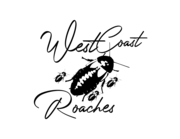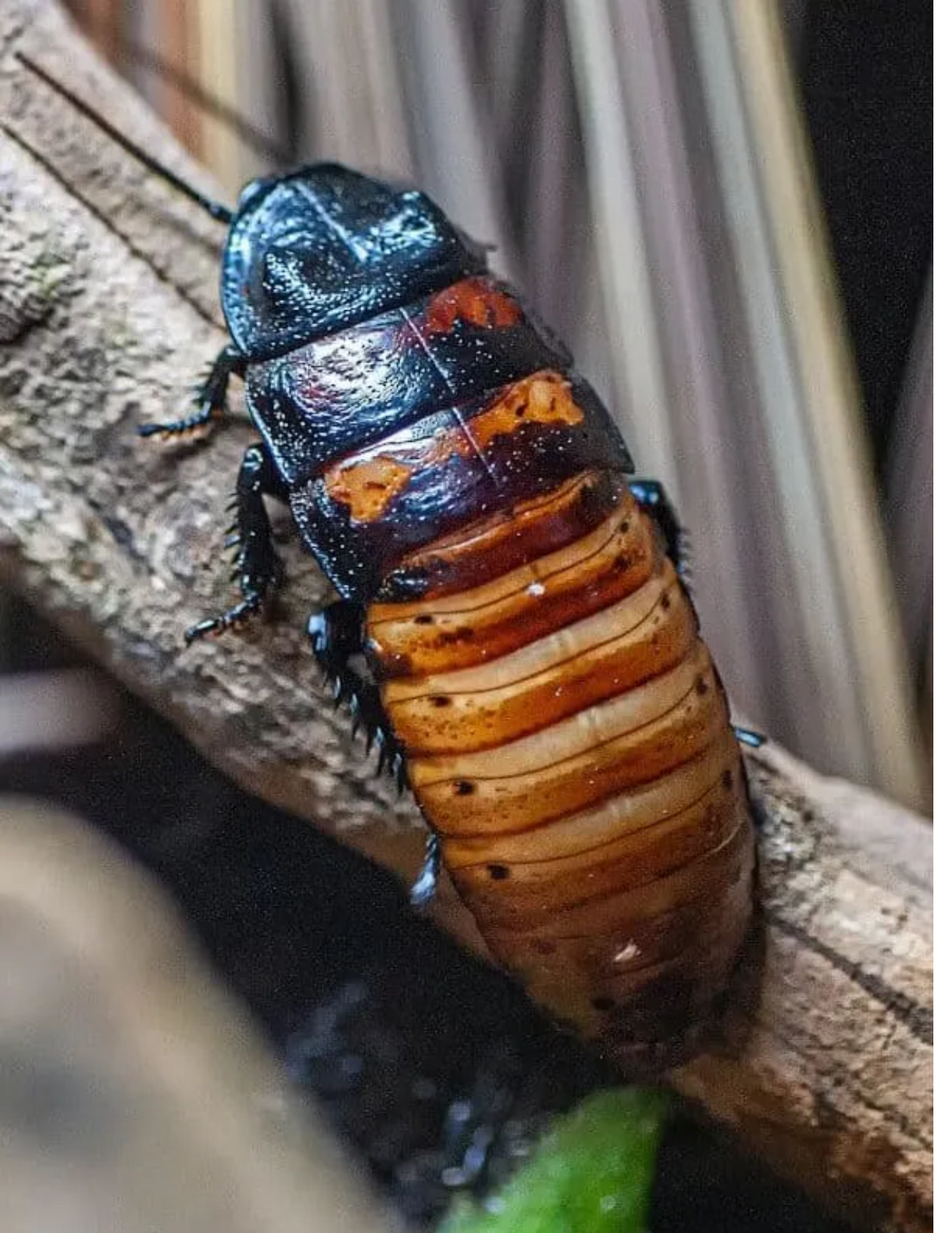About Madagascar hissing cockroaches
Madagascar hissing cockroaches, also called hissing cockroaches or simply hissers, is one of the largest species of cockroaches. They are beautiful brown coloured on their exoskeleton and cover their whole body, only six legs and two antennas our sticking out.
However, these cockroaches are mostly known for the hissing sound they can make. They press air through respiratory openings (called spiracles) on their abdomen. They use various types of hissing sounds. One call is for when they are feeling threatened, one call to attract a mate and another call is for warning to males when a male is ready and preparing to attack for the right to mate. Fun fact: every hissing cockroach has its own characteristic sound. Hissing cockroaches can distinguish the sounds between different individuals.
Cockroaches like to be in a colony so it would be best to keep several individuals together. We always talk about keeping a colony instead of keeping one individual. You don’t need to keep them by the hundreds. If you want a small colony, you can already start with six hissers housed together, but keep in such situation more females than males. Males are territorial and may keep attacking each other.
Enclosure setup
Madagascar hissing cockroaches can be housed in simple aquariums, DIY enclosures or reptile terrariums. Despite that they don’t have wings and can’t fly, they are excellent climbers and can even climb up the smooth glass. So make sure they enclosure have a lid or can be closed off in some way.
Hissers don’t need much space. You can house ten hissers perfectly in a small glass aquarium with a size of 20cm by 20cm. It is better not to go any smaller. When you have more space, you can house larger colonies, but when starting with ten hissers and a little patience, you’ll have soon enough over 100 cockroaches.
If you have a closed space for your cockroaches, make sure there is enough ventilation. You can make a lid of fine metal mesh. Ventilation is essential for the well-being of the cockroaches and prevents the build-up of nasty smells.
Habitat
To house Madagascar hissing cockroaches comfortably you’ll need to make the perfect habitat. As they are tropical cockroaches, they are best kept at a temperature around 25°C – 28°C (77°F – 82°F). At night, you can let it cool down to a minimum of 21°C (70°F). They need these temperatures to allow the metabolism and immune system functioning properly. With breeding, you’ll absolutely have to keep the temperature around 27°C-28°C for most breeding success.
You can heat the enclosure by using simple light bulbs. Place them above and outside the enclosure to prevent that cockroaches or furniture can get burned. You’ll need to experiment which wattage would fit in your situation to create the right temperature range. When you connect them to a timed switch, you can create day and night temperature, and at the same time, a proper light cycle. A 12h:12h cycle would be just perfectly fine.
Hissing cockroaches also need high humidity. Higher humidity helps them with moulting (shedding their outer exoskeleton) and for the development of eggs and nymphs. Keep the humidity between 65% and 80% so they will thrive the best. Keep the substrate damp (not wet) by misting water frequently. Misting should be done daily or every other day.
Buy a simple thermometer and hygrometer (often available in the same device) to monitor the temperature and humidity inside the enclosure. When monitoring environment, you know how well the habitat suits the cockroaches. When you do not reach the right temperature or humidity, you can make small changes to your setup.
What to feed Madagascar hissing cockroaches?
Madagascar hissing cockroaches are primarily herbivores. Feed your hissers a variety of fresh vegetables and fruits. You can feed them leafy greens (but avoid iceberg lettuce), carrots, tomatoes, peas, celery, apples, bananas, oranges and potatoes.
You can also add dry food to this diet. Think of pellet food for dogs. You can make the pellet food wet, so it is easier for them to eat and digest. And in this way, you also provide drinking water. You can also use oats flakes to feed them.
It would be best if you remove, at least, the food every other day. Hissing cockroaches, unlike other cockroaches, only eat fresh fruits and vegetables. The uneaten food will start quickly to moult when left in the enclosure. Feed them from a bowl, so the food or particles of it will not disappear in the substrate where it can rot.
Hissing cockroaches can extract much water from their fresh food, but it is good to provide a drinking bowl as well. Make sure this bowl is shallow and have low edges, so cockroaches can easily climb in or out. It would even be better to use a sponge (make sure it does not contain chemicals!) to prevent the small nymphs from drowning in the water bowl. Best would be to refresh the water bowl every day.

